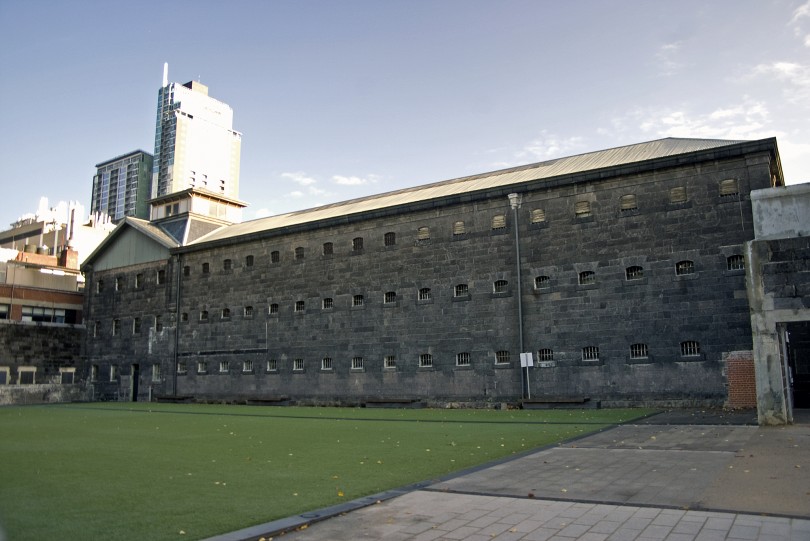The huge bluestones surrounding RMIT’s Alumni Courtyard carry the weight of centuries of crime, death and injustice behind them. Now, inside the walls, students drink coffee in beanbags.
Nearly the entire complex of the Old Melbourne Gaol is owned by RMIT, but many students are unfamiliar with the buildings’ history and how it came to be a part of the university.
The gaol was built in the 1850s as a larger alternative to the prisons adjacent to the courts on William Street, and housed some of Victoria’s most notorious criminals, including Ned Kelly and several members of the Eureka Stockade goldmine riots.
What is now the RMIT Alumni Courtyard is currently housing a dining and seating area for students, and is used by the RMIT Student Union for parties. Before 1929 it was the courtyard for prisoners.
The courtyard was built in the 1850s and expanded towards the end of the decade, with the chapel and other buildings behind what is now Building 9 and next too Franklin Street built then too.
RMIT owns the whole site aside from the museum –made up of the main cell block – which is run by the National Trust.
The National Trust told City Journal the Gaol works with RMIT to co-ordinate events in parts of the gaol, and is responsible for the maintenance of the grounds.
Parts of the gaol were used as the Emily McPherson College for Domestic Sciences until the school merged with RMIT in 1979, and is today known as Building 13.
It was following this merger that RMIT gained access to their courtyard, and the buildings at the back, which now house the chapel and art studios.
So next time you wander past the blue stones, keep in mind the darker past of the walls.

